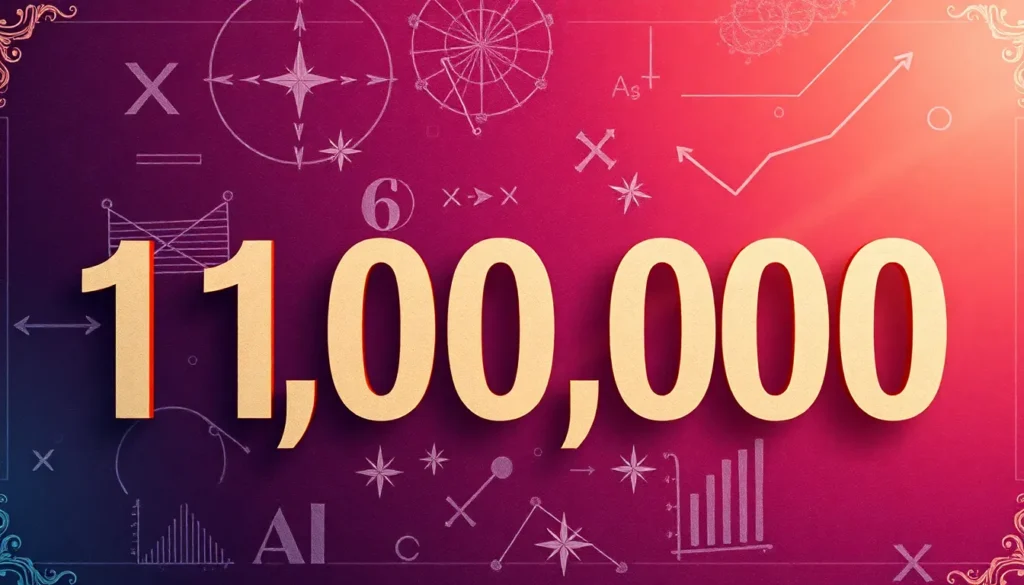When it comes to numbers, few can pack a punch quite like “10 to the power of 6.” This nifty little expression translates to a whopping one million, and let’s be honest, who doesn’t love a good million? Whether you’re counting your loose change or dreaming of your next big payday, understanding this concept can make you feel like a math wizard.
Table of Contents
ToggleUnderstanding Exponents
Exponents represent repeated multiplication of a base number by itself. When someone writes “10 to the power of 6,” it signifies multiplying 10 by itself six times, resulting in one million.
Definition of Exponents
An exponent consists of a base and a power. The base indicates the number being multiplied, while the power shows how many times to multiply that number. For instance, in the expression “2 to the power of 3,” the base is 2 and the power is 3. Repeatedly multiplying 2 three times results in 8. Thus, understanding this structure is crucial for comprehending mathematical operations involving exponents.
Significance in Mathematics
Exponents play a vital role in various mathematical concepts. They simplify the representation of large numbers, making calculations easier. In scientific notation, for example, large values often appear with exponents. Elevating concepts like growth rates uses exponents to describe rapid changes in fields such as finance and biology. Moreover, exponents form the foundation for equations in algebra and calculus, showing their importance in higher-level math. They help convey essential principles and provide clarity when working with complex mathematical ideas.
What Is 10 to the Power of 6?

10 to the power of 6 equals one million. Understanding this concept reveals its mathematical and practical significance.
Explanation of the Calculation
The expression means multiplying the base number 10 by itself six times. Mathematically, it appears as 10 × 10 × 10 × 10 × 10 × 10. This calculation results in 1,000,000. Grasping how exponents work can simplify larger computations. Exponents enable quicker handling of large numbers, making calculations more efficient. Recognizing that 10 to the power of 6 represents a significant milestone simplifies complexities in various math problems.
Real-World Applications
10 to the power of 6 frequently appears in financial contexts. For instance, in discussions about revenue generation, one million often serves as a benchmark. This expression also appears in data measurement, such as bytes in computing. Many smartphones boast storage capacities in millions of bytes, showcasing practical relevance. Additionally, 10 to the power of 6 aids in statistical reporting, where populations and data samples often reach this figure. In science, million denotes quantities in research findings, emphasizing its everyday importance.
Visualizing 10 to the Power of 6
Visualizing “10 to the power of 6” helps comprehend its magnitude. One million represents a significant quantity in various contexts, making the visualization essential for understanding its real-world applications.
Graphical Representation
Graphs effectively depict large numbers like one million. A bar chart comparing populations of cities, for example, can illustrate differences on a relatable scale. Using a logarithmic scale also provides clarity, allowing easier comparisons between various powers of ten. In this format, “10 to the power of 6” stands out appreciably against smaller powers, such as “10 to the power of 3,” visible in the graph’s height. Visual tools like pie charts can show financial distributions, where one million forms a considerable slice, aiding viewers in grasping the concept.
Comparisons with Other Powers
Comparing “10 to the power of 6” with other powers of ten provides valuable perspective. “10 to the power of 3” equals 1,000, while “10 to the power of 5” represents 100,000. The differences between these numbers become striking when noted side by side. Understanding these comparisons highlights the exponential growth present in powers. Notably, each increment of one in the exponent multiplies the previous value by ten, emphasizing how quickly numbers escalate. This realization facilitates recognizing the significance of one million in both practical and abstract scenarios.
Common Misconceptions
Misunderstandings surround “10 to the power of 6” and its implications. Clarifying these misconceptions enhances comprehension and practical application.
Misunderstanding Exponential Growth
Exponential growth can often confuse individuals. Many mistakenly equate this concept solely with rapid increase without grasping its underlying mechanics. When the base number increases significantly, even a small change in the exponent leads to substantial shifts in the outcome. For instance, “10 to the power of 6” results in 1,000,000, whereas “10 to the power of 7” jumps to 10,000,000. This vast difference illustrates how quickly values escalate, especially in fields such as finance and science where understanding this growth is critical. Recognizing that exponential increases compound values dramatically in specific contexts empowers better decision-making.
Clarifying Terminology
Terminology surrounding exponents often creates confusion. Exponentiation involves two distinct components: the base and the exponent, which frequently overlap in discussions. Individuals may refer to “10 to the sixth” when meaning “10 to the power of 6” and can misinterpret these terminologies. Miscommunication arises when discussing related concepts such as orders of magnitude or logarithmic scales. Clear definitions promote a proper understanding of how these terms relate to numerical values and their significance. Learning these terms enables individuals to navigate mathematical discussions with greater confidence.
Understanding “10 to the power of 6” opens doors to a deeper comprehension of mathematics. This expression not only represents one million but also serves as a vital tool in various fields, from finance to science. Grasping the concept of exponents empowers individuals to tackle complex calculations with confidence.
Recognizing the significance of large numbers and their exponential growth can enhance one’s analytical skills. By visualizing these concepts through graphs and comparisons, it becomes easier to appreciate the magnitude of one million. This knowledge is essential for navigating everyday situations, whether in budgeting or interpreting data. Embracing the power of exponents enriches mathematical literacy and fosters a greater appreciation for the world of numbers.













